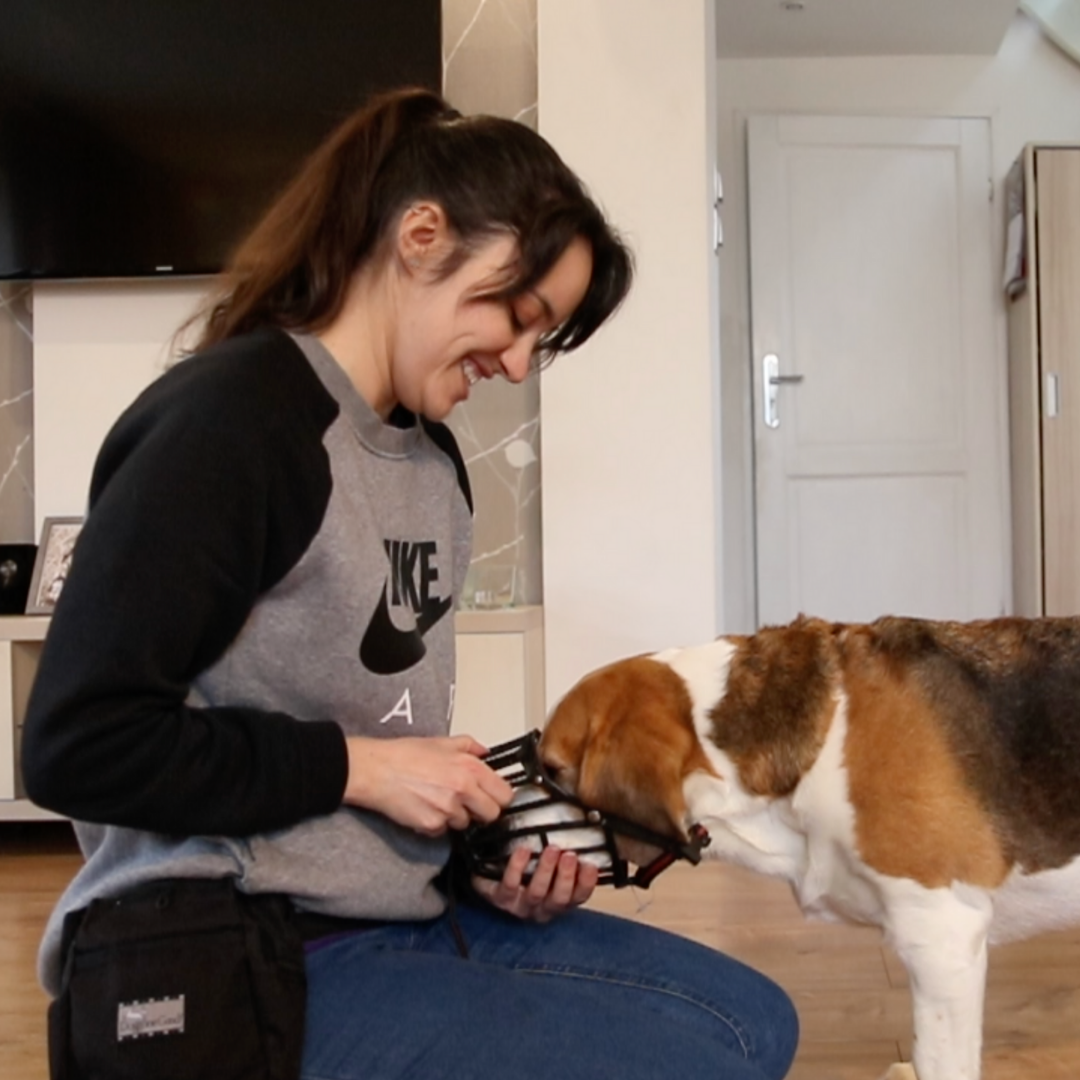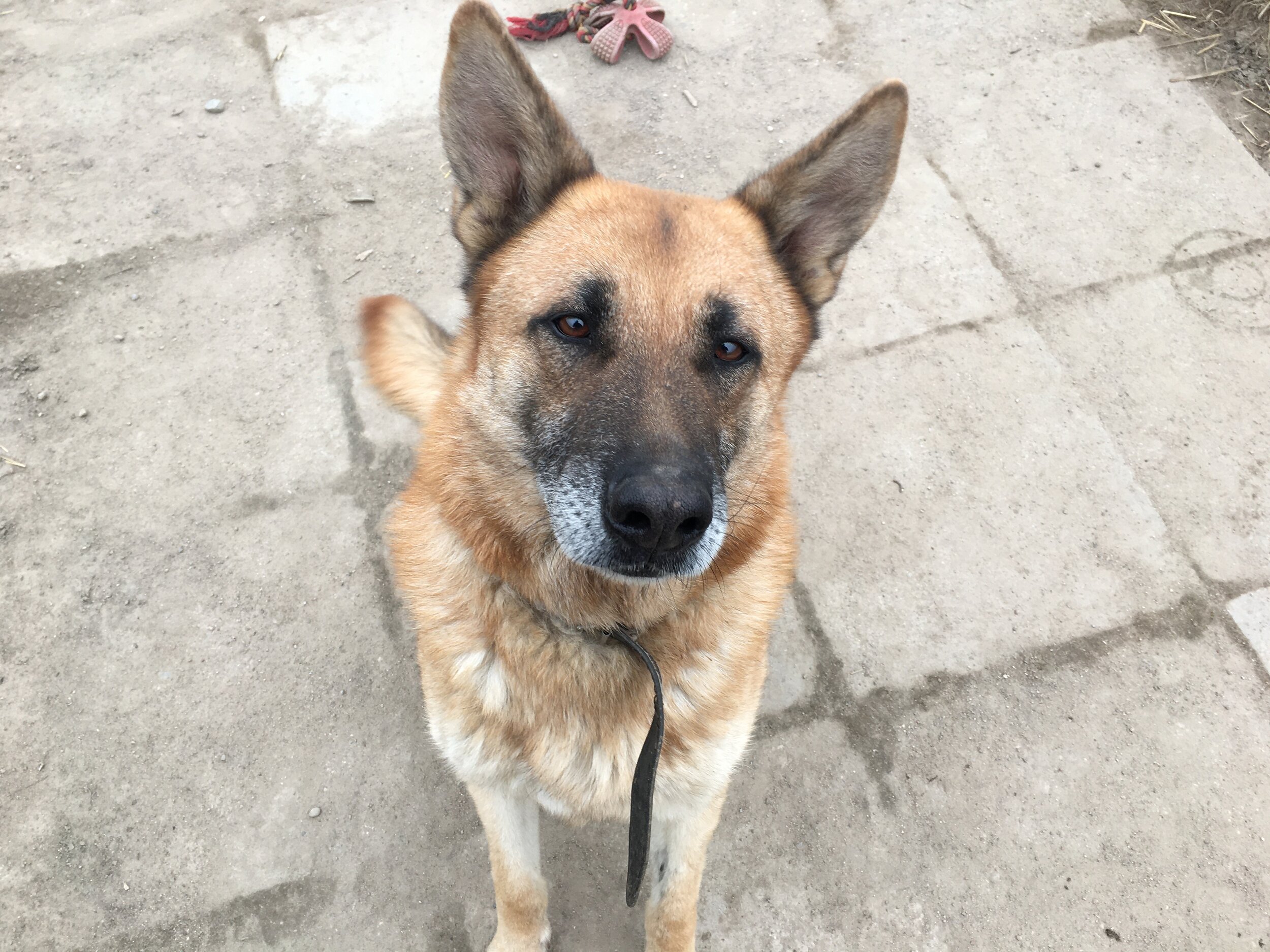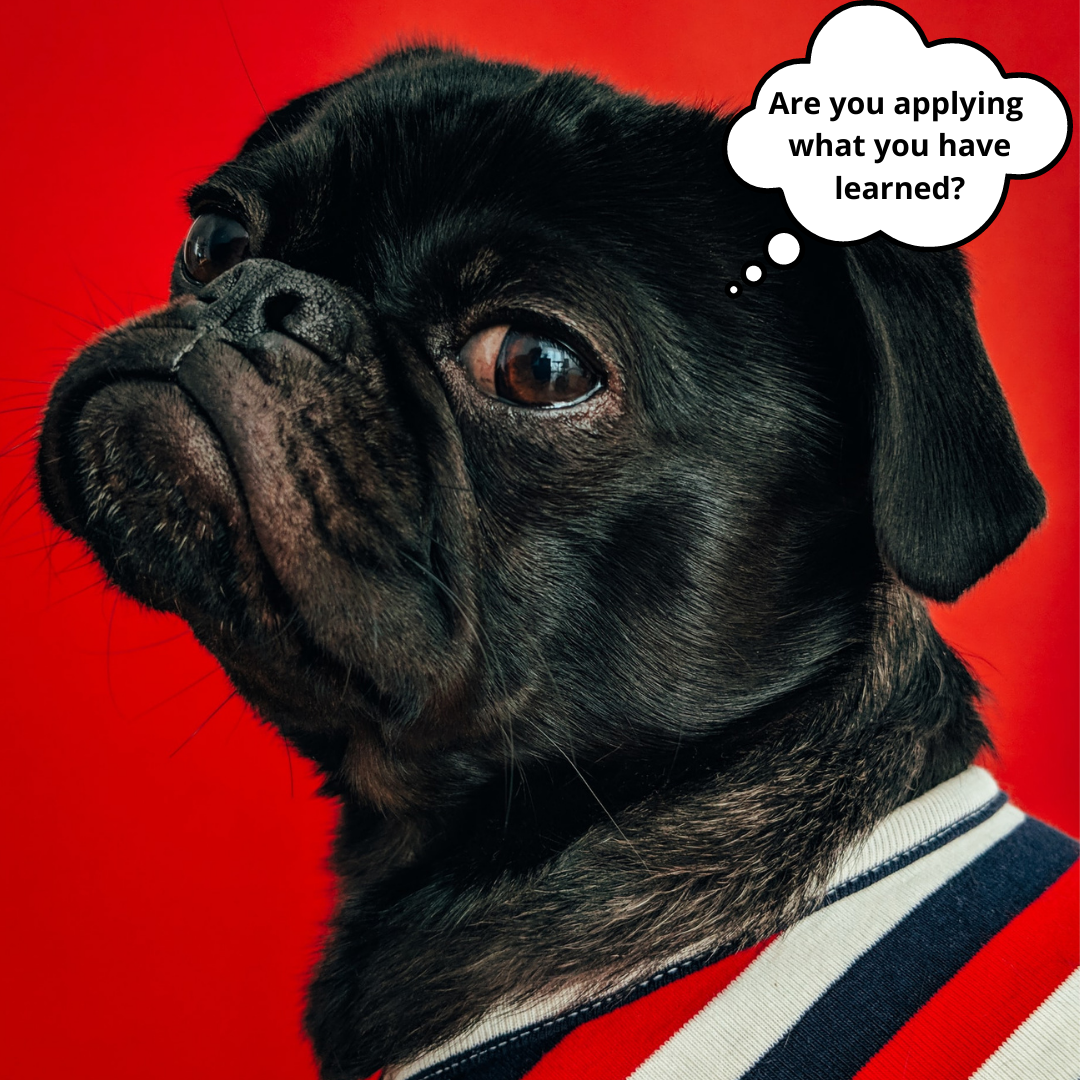Why didn't I use a clicker?
In the previous blog, I shared a video working with Odie dog on muzzle training. It was the first time when I tried to not only train but also explain verbally what I'm trying to do at the same time. It wasn't easy for me! It's one thing to do training, it's another to explain it and yet another one to combine it! I remember Ken Ramirez talking about that in one of his Live from the Ranch and how he needed to learn this skill while being a teacher for so many years, yet even he explained that while working with 4 animals at the same time, he will stay quiet and focus on what is happening in front of him. I'm nowhere near his experience and I see how much more skills I need to get to be more comfortable with it.
In the video, you can see that I haven't used a clicker or a marker. Odie didn't yet know a marker and I decided to give the training a try without it. I know that his caregivers won't be training him in the future. I see that the training is more sloppy (that also tells me that my food delivery is nowhere near where I would like it to be - more skills to work on!) however, I also want to try training without it as I find that with some owners it's better to do sloppy training than no training at all. There are people who don't yet have any skills in delivering food and adding the clicker or a marker can be too much for them at the beginning. Some people also want to stop there and don't go into more precise training. I believe it's better than scare them away with too many things they "need" to learn to train their dogs. I want them to start at their comfort level and see how it goes. The dog will still learn! Just because we don't use any precise markers, it doesn't mean our behaviour cannot mark for the dog! Just putting a hand in the treat pouch is already a marker for many dogs. I want to know if I can do training without markers too. It might make it harder but I want to see how it goes.
A little bit of context for those who are not familiar with clicker training.
What is clicker training?
Clickers
Clicker training is using a conditioned reinforcer to mark behaviour we want to reinforce with primary reinforcement. One of the most popular conditioned reinforcers is the clicker but other people use whistles as well as words like "yes", "good" or a tongue click. This sound is marking the behaviour we want to see more of in our animal. It is then followed by food or any other primary reinforcer we use. It is important to follow it with a primary reinforcer otherwise it will lose its value. The information that the conditioned reinforcer delivers to the animal is "that was the right behaviour and the primary reinforcer is coming". I've seen novice owners using a clicker as a tool of getting their dogs’ attention. That's not the original and intended use of this tool. We don't just want to get the dogs’ attention, we are assessing what the dog is doing and marking the things we would like to see more of. The clicker has a function of informing the dog that the behaviour he just did will be likely to get reinforced again in the future. It can be quite complicated at the beginning. That's why I don't recommend novice owners to start from it. Having a clicker or a marker is a great tool when the caregiver wants more precision and is interested in learning more.
Other things I could do to improve the training
If I decided not to add a marker, I could have used food that wouldn't be so sticky and wouldn’t be falling in different places. The food you use matters and makes the training easier or more distracting for the dog. That being said, when you know that the owner if ever tries to do the same thing will also lose the food all over the place, the dog is learning how the session will normally look like and can learn to ignore the food on the floor in the long run. Another thing I could have added was a carpet that will help Odie navigate in the space. Slippery floors especially for an older dog are not easy.
I could have changed a lot of things to make the training more successful and the progress faster. Every session is a learning experience not only for the dog but also for the trainer. I'm not afraid to try and learn from the "miss-takes" I make. It's not a failure, it's an information-gathering process :)
Quoting Ken Ramirez "Happy training everyone!”
Photo by Katie Bernotsky on Unsplash


















